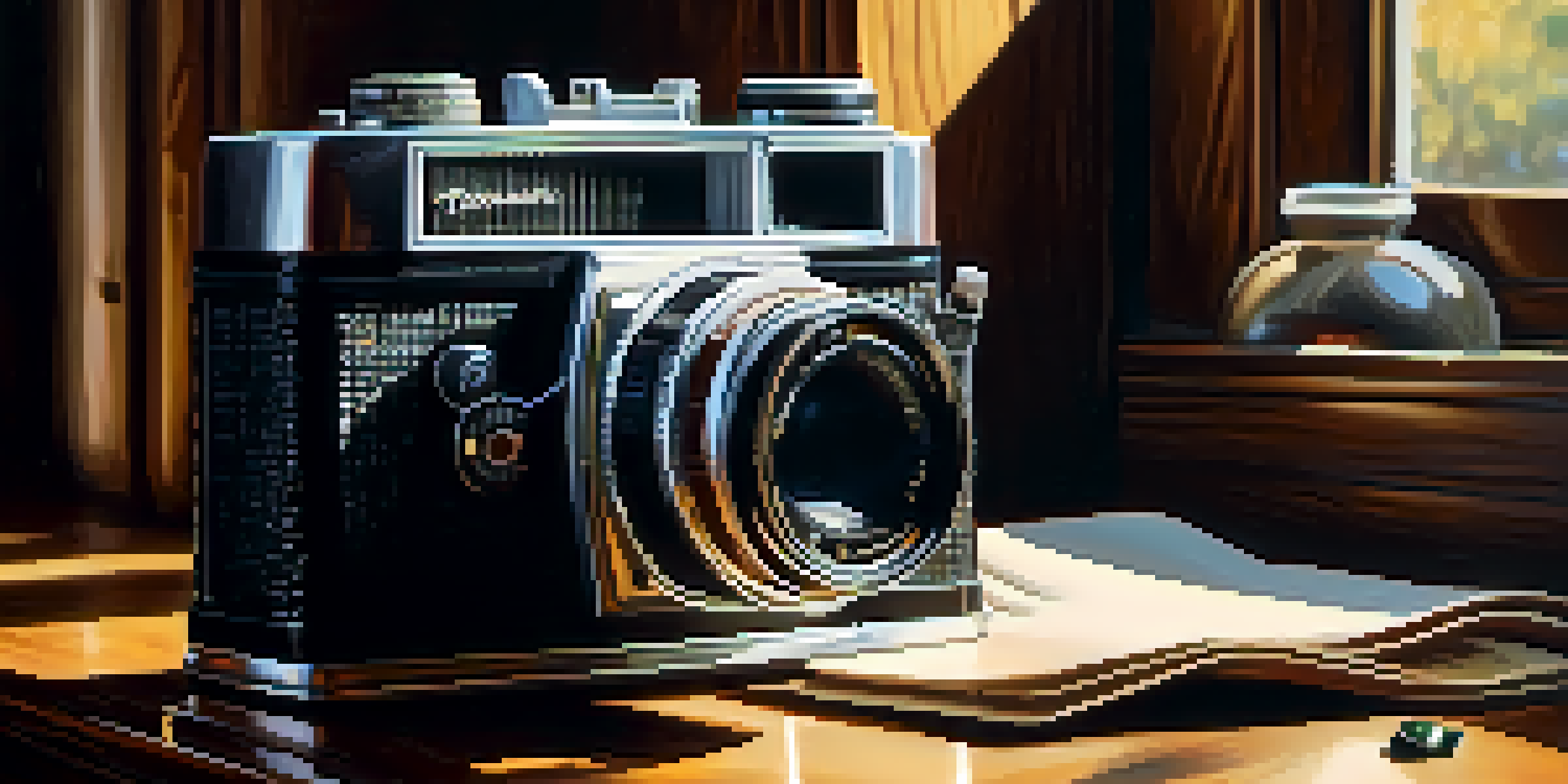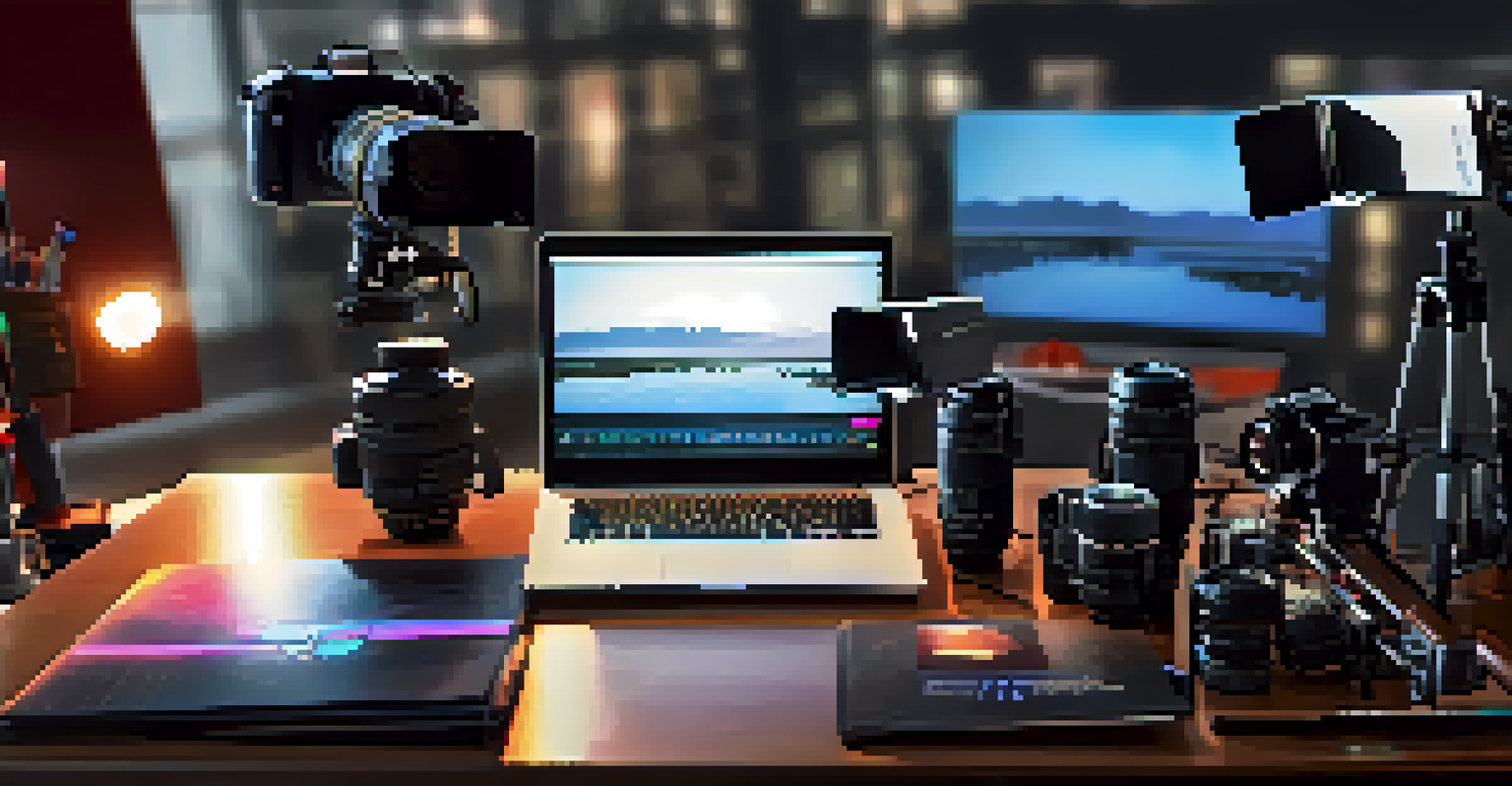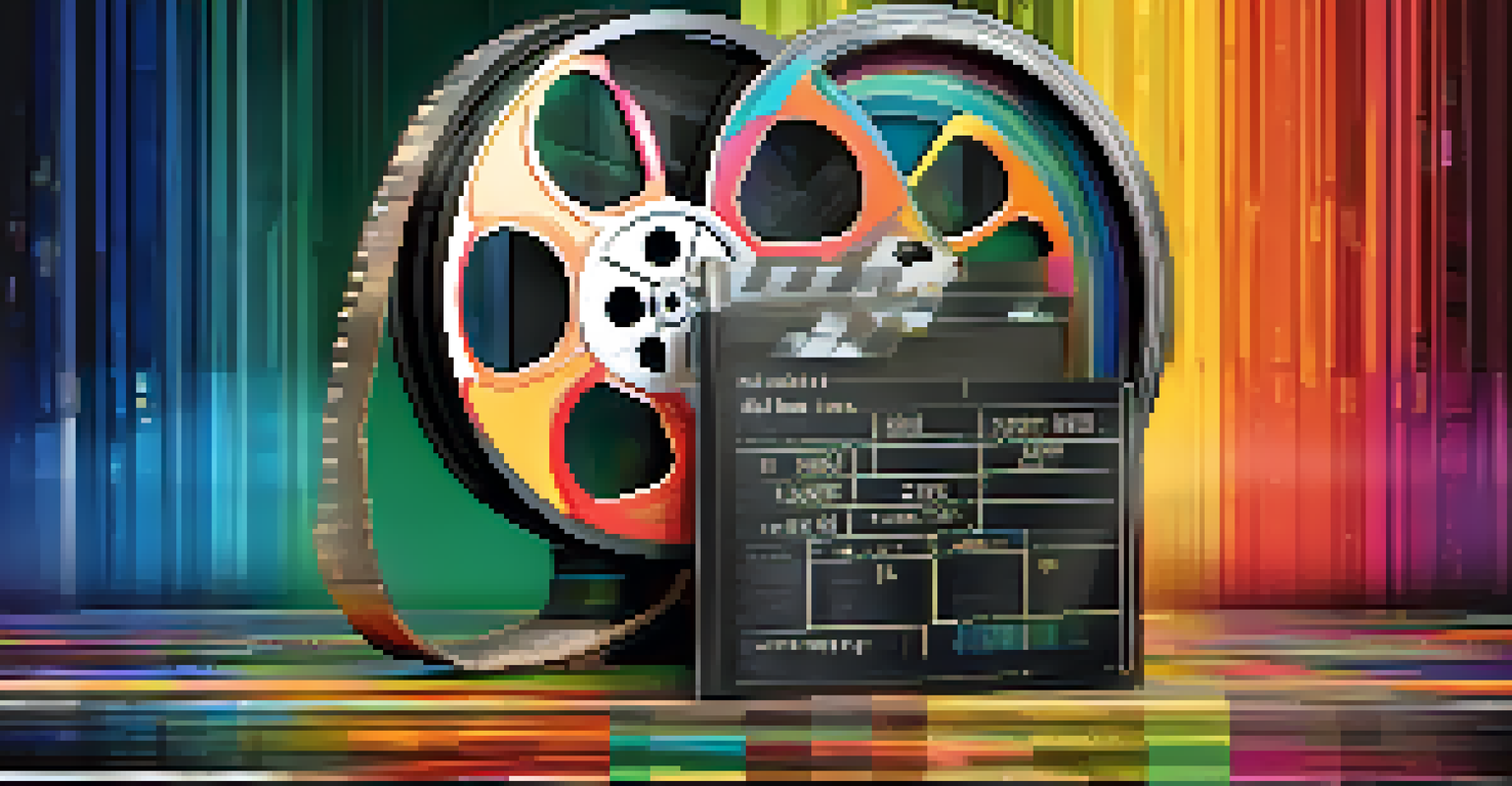From Analog to Digital: The Revolution in Filmmaking

The Dawn of Analog Filmmaking: A Brief History
Analog filmmaking emerged in the late 19th century, introducing a new way to capture reality. This method relied on physical film stock, where light exposure created images on a strip of celluloid. Directors and cinematographers had to master the intricacies of film reels, which required precise timing and technical skill.
Film is a very personal medium. It’s a way of expressing yourself and your ideas, and it’s important to preserve that art form, whether it’s analog or digital.
For decades, analog film dominated the industry, with iconic movies crafted using traditional techniques. The tactile nature of film offered a unique aesthetic, characterized by rich textures and colors that defined many classic films. However, the limitations of film, such as cost and accessibility, posed significant challenges for filmmakers.
As technology evolved, the limitations of analog filmmaking became increasingly evident. The need for a more efficient, versatile method led to the exploration of digital technology, paving the way for a revolution in how films are made and consumed.
The Rise of Digital Filmmaking: A Game Changer
The introduction of digital cameras in the late 1990s marked a pivotal moment for the film industry. Suddenly, filmmakers could capture high-quality footage without the constraints of film stock, opening up new creative possibilities. This shift allowed for greater experimentation and spontaneity on set, leading to innovative storytelling techniques.

Digital technology also made filmmaking more accessible. Independent filmmakers, who previously struggled with the high costs of film production, could now create compelling content with relatively inexpensive equipment. This democratization of filmmaking has led to a surge in diverse voices and stories being told.
Analog to Digital: A Filmmaking Shift
The transition from analog to digital filmmaking has revolutionized the industry, enhancing accessibility and creative possibilities for filmmakers.
As digital cameras improved in quality, they began to rival traditional film. Directors like Peter Jackson and James Cameron embraced digital filmmaking, showcasing its potential in blockbuster hits. This acceptance by industry giants confirmed that digital was not just a fad, but a legitimate evolution in filmmaking.
Editing Revolutionized: The Digital Advantage
One of the most significant changes in filmmaking came with digital editing software. Programs like Adobe Premiere and Final Cut Pro transformed the post-production process, allowing editors to work more efficiently and creatively. The ability to manipulate footage digitally made it easier to experiment with different cuts and effects, enhancing storytelling.
The digital world has given us the ability to tell stories in ways that were once unimaginable. It's an exciting time for filmmakers.
In the analog era, editing was a painstaking process that involved physically cutting and splicing film reels. This not only consumed time but also limited the editor's ability to make changes on the fly. With digital editing, filmmakers can visualize changes instantly, making the entire process more fluid and dynamic.
The rise of digital editing has also contributed to the trend of collaborative filmmaking. Filmmakers can easily share projects online, allowing for real-time feedback and contributions from team members across the globe. This collaborative spirit has fueled innovation and creativity in the industry, fostering a community of filmmakers who can learn from and inspire each other.
Visual Effects: From Practical to Digital Wizardry
Visual effects (VFX) have seen a stunning transformation due to digital technology. In the past, filmmakers relied heavily on practical effects, which, while impressive, often limited the scope of what could be achieved on screen. With advancements in CGI (computer-generated imagery), filmmakers are now able to create breathtaking visuals that were once thought impossible.
Digital VFX has enabled filmmakers to tell stories that push the boundaries of imagination. Franchises like Marvel and Star Wars have utilized cutting-edge technology to bring fantastical worlds and characters to life, captivating audiences worldwide. This not only enhances the visual experience but also allows for more complex narratives.
Digital Editing Transforms Storytelling
Digital editing software has streamlined post-production, allowing for greater experimentation and collaboration among filmmakers.
However, the rise of digital effects has sparked debates about their impact on filmmaking. Some critics argue that over-reliance on CGI can lead to a lack of authenticity and emotional connection in films. Striking a balance between practical effects and digital enhancements remains a key challenge for filmmakers today.
Sound Design: The Evolution from Analog to Digital
Just as visuals have evolved, so too has sound design in filmmaking. In the analog era, sound was recorded on film and required meticulous syncing in post-production. This process was not only labor-intensive but could also result in synchronization issues that detracted from the viewing experience.
With digital sound recording and editing, filmmakers gained unprecedented control over audio elements. Sound can now be captured separately and manipulated with precision, allowing for richer soundscapes and immersive experiences. This evolution has given rise to innovative techniques like Foley, where sound effects are created in sync with the action on screen.
The result is a more engaging cinematic experience for audiences. Films today can evoke emotions through sound in ways that were previously limited by technology. From subtle background music to explosive sound effects, the digital age has truly transformed how sound enhances storytelling.
Distribution and Consumption: The Digital Shift
The transition from analog to digital filmmaking has also revolutionized the distribution and consumption of films. In the past, films were primarily released in theaters or on physical media, limiting access for many viewers. Digital formats have opened up a world of possibilities, allowing films to be streamed online and consumed on various devices.
Platforms like Netflix, Amazon Prime, and Hulu have changed the way audiences discover and enjoy films. This shift has democratized access to content, enabling independent filmmakers to reach global audiences without the need for traditional distribution channels. As a result, diverse stories and voices are now more visible than ever.
Hybrid Techniques Shape Film's Future
Filmmakers are increasingly blending analog and digital methods to create unique cinematic experiences that push the boundaries of storytelling.
Moreover, the rise of digital distribution has led to innovative marketing strategies. Filmmakers can engage with audiences through social media, building communities around their films. This direct interaction fosters a deeper connection with viewers, enhancing their overall experience and investment in the film.
The Future of Filmmaking: Embracing Hybrid Approaches
As we look to the future, it’s clear that the film industry will continue to evolve at a rapid pace. With advancements in technology, filmmakers are now blending analog and digital techniques to create unique cinematic experiences. For instance, some directors are experimenting with shooting on film while using digital tools for editing and effects.
This hybrid approach allows filmmakers to harness the best of both worlds, preserving the rich aesthetic of analog while benefiting from the efficiency and flexibility of digital. As technology continues to advance, we can expect even more innovative storytelling methods to emerge, pushing the boundaries of creativity.

Ultimately, the transition from analog to digital in filmmaking is a testament to the industry's adaptability and resilience. As filmmakers embrace new technologies and techniques, they will continue to captivate audiences with compelling stories that challenge norms and inspire future generations.